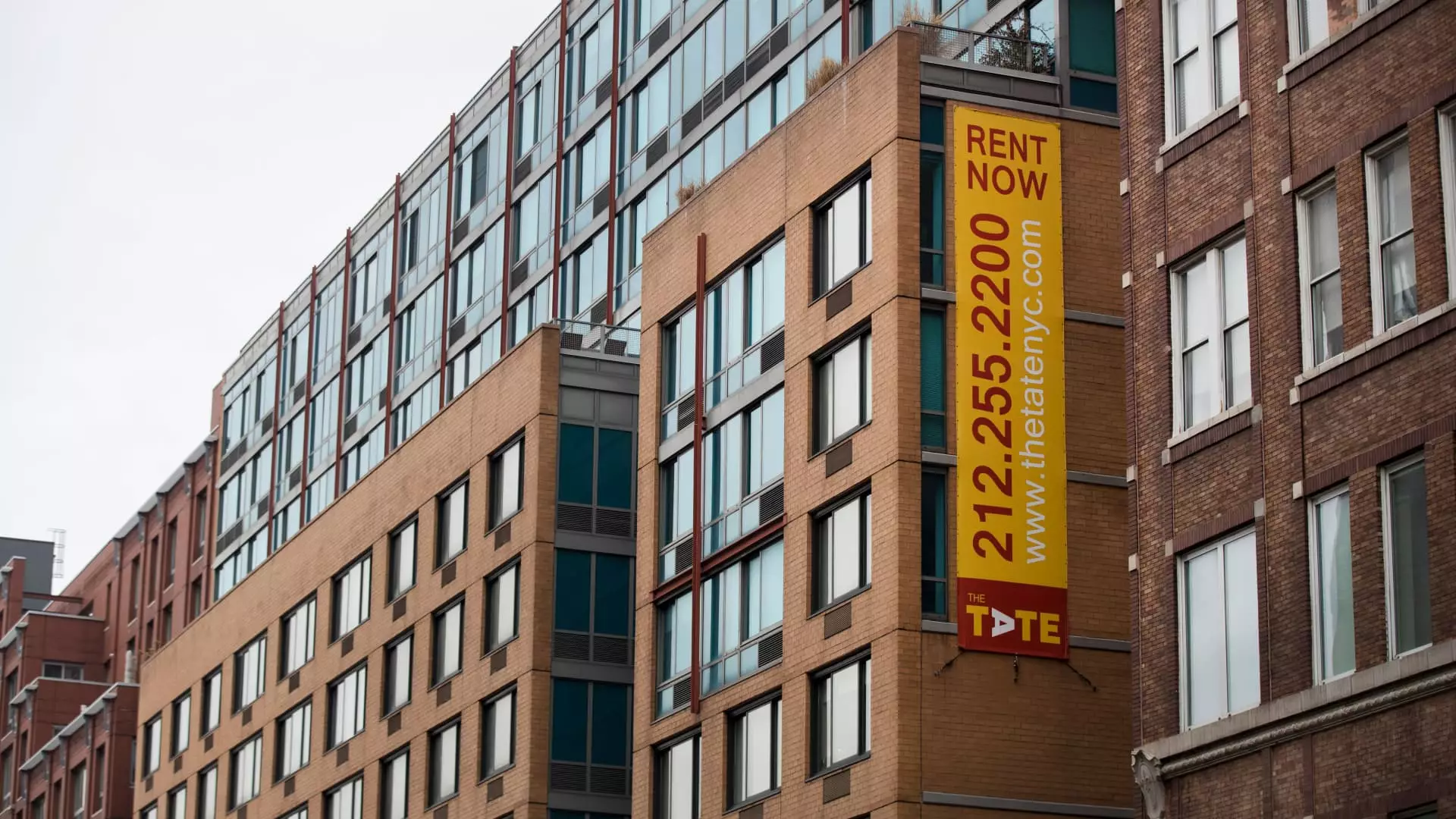In an unexpected twist, the rental market is hitting a plateau, defying the intuitive norms we’ve long accepted. Renting, traditionally seen as a flexible, lower-cost alternative to homeownership, has experienced a seismic shift. Real estate analyst Alex Goldfarb points out a striking phenomenon: urban apartment rentals are witnessing turnover rates around 30%, starkly lower than the anticipated 50%. This unprecedented stagnation is alarming, signaling that many renters, once eager to move on, are instead gagged by rising unaffordability in the home-buying market and skyrocketing moving costs.
For many, renting was synonymous with liberation, the freedom to switch homes with minimal hassle. However, economic pressures are forcing individuals to rethink this lifestyle. As the rental supply dwindles on coastal cities, potential movers are caught in a web of rising rents and stagnant wages. This stagnation leads many renters to hunker down rather than seeking new horizons, creating a disconnect between aspiration and reality.
Landlords’ Boon: A Double-Edged Sword
Surprisingly, this low turnover is not merely a concern for renters—it’s a boon for landlords. With people more inclined to stay put, property owners are capitalizing on the situation. According to Goldfarb, this translates to improved pricing on lease renewals and enhanced cash flow, due to lower costs associated with tenant turnover. However, one has to wonder: at what cost?
This scenario illuminates the deeper problem of a market favoring landlords over renters. In the current landscape, landlords are experiencing a windfall, while tenants are left grappling with the vulnerability of an ever-tightening rental pool. It raises the unsettling question: will we continue to reinforce a system that prioritizes profits over people? As the shift to suburban apartments emerges, it offers larger spaces but often with suffocating rental prices attached.
Tech Influence and Regional Disparities
Regionally, the multifamily real estate investment trust (REIT) sector is witnessing robust activity in tech-savvy cities such as San Francisco and Seattle, thanks to a resurgence of tech companies like Amazon prompting workers back to the office. However, it’s crucial to acknowledge that what benefits one area could spell peril for another. The once-thriving Sunbelt, a popular pandemic choice, might teeter on the edge if a recession looms and job cuts flatten demand.
As newcomers flock to tech-rich circular economies, we are left pondering the implications for those marginalized in the process. This is not merely a real estate discussion; it’s about the evolving landscape of labor, job security, and economic disparity. Will this trend foster innovation, or will it fortify divides between thriving metropolises and the regions left behind?
Demand vs. Supply: A Temporary Relief or Lasting Change?
While CBRE’s recent report showcases an uptick in rents and decreasing vacancy rates, it’s essential to remain skeptical. Yes, the multifamily sector is enjoying its fourth consecutive quarter of rising demand, but the question remains: is this a fleeting bounce back? During an era characterized by rapid change, market shifts often occur quickly and unpredictably.
The notion that we have greater positive net absorption than new supply may provide momentary relief, but it hardly resolves the core issues underpinning our housing crises. As renters feel crushed under financial burdens, policymakers must grapple with the challenges of an equitable housing market.
The multifamily rental market holds potential, but amidst the narratives of revitalization, we must remember: the hardships faced by everyday renters cannot be overlooked in the pursuit of profit-centric growth.

